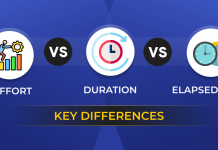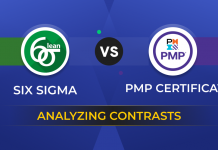
Distribution of project information is one of the most vital things in project management. The project manager should take responsibility for distributing project-related information so that the rest of the organization is aware of all project-related updates, progress, etc. To ensure that the right people such as project stakeholders, project board members, and project sponsors get the right amount of information at all times, a great deal of planning is required. Therefore, a careful selection of the right tools and communication methods is necessary to ensure this. This article will take you through the various means and methods of communicating project-related information, their importance, and challenges.
Means of Communication
Means of communication depend on a few factors such as the type of information to be communicated, the audience, and the timeline within which a response is needed. Based on these factors, communication can be broadly categorized into the following forms.
-
Oral communication:
Oral communication includes phone calls, meetings, one-to-one discussions, presentations, conferences, etc.
-
Written communication:
Written communication includes letters, memorandums, faxes, files, and business letters.
-
Multimedia:
Multimedia-based communications include telephonic and video conferences.
-
Network:
This includes communications through online messaging mediums such as email, instant messaging, forums, etc.
The method you choose to communicate depends a lot on the kind of project you are dealing with, its size, accessibility with stakeholders and project board members, and the scale and size of the project. Let us take a look at the three main types of communication and how they are leveraged for distributing project information.
-
Face-to-Face Communication:
Face-to-face communication can either be a meeting or a one-to-one conversation. In either case, the key benefit of face-to-face communication is that it allows you to gauge the reaction of who you are conversing with, while also ensuring that your audience is well aware of what you are talking about.
However, face-to-face meetings can be expensive in case project members are spread across the world. Nevertheless, it is important that you have at least one face-to-face meeting during the course of a project. Preferably the meeting should be at the project kick-off time, and towards the end or closure. In case you are planning a meeting in which members from across the world are expected to participate, ensure that you inform them well in advance so that members can plan their work accordingly. It is also vital that you discuss the agenda before the actual meeting takes place so that members are well aware of the topics of discussions and come prepared if needed.
-
Hard Copy Communications:
Hard copy communications are in the form of meeting memorandums, reports, and letters. Since they come with both visuals and texts, it is not necessary that they have to be delivered during a meeting or right after it. You can review it a few times and add visual elements so that readers find it interesting to read. These also serve as reference materials for future use. However, one disadvantage of hard copy communications is storage. Here comes the importance of the electronic mode or online communications.
-
Online Communications:
Your stakeholders or seniors may want a copy of the minutes of a meeting, project kick-off documents, client reports, and so on. In such cases, it is best to keep an email copy of all documents related to a project so that they can be produced in case of disagreement between you, clients, and stakeholders. Although direct communications during face-to-face, telephonic, and video conferences create a better impact, word of mouth cannot be taken as the last resort in case of business matters.
In case you need to have a discussion with all team members within a short time, electronic communications serve as the best way out. You can opt for options like Microsoft Lynch conference calls, Skype conferences, or similar tools.
How to Distribute Information during Meetings
Information flows in various ways. However, communication lines are not dependent on the number of people present in a meeting. For example, if there are 10 people present for a meeting, it does not necessarily mean that there will be 10 lines of communication. The lines of communication can be decided by using the formula: n(n-1)/2 (n = number of people present for the meeting). Going by this formula, if there are 5 people present, 10 lines of communication will be needed.
It is important that you reinforce your messages clearly during a meeting. Follow a few simple steps to accomplish this.
-
Set the agenda:
Set the agenda and distribute it among team members prior to the start of the meeting so that everyone is aware of it.
-
Appoint Someone:
It is crucial that before the start of a meeting, you appoint someone to take minutes of the meeting. Minutes are very important documents for referring to project updates and status reports at any time during the course of the project.
-
Distribute Project Reports:
Project reports, if any, should be distributed among all team members so that everyone is on the same page regarding project status.
Barriers to Distributing Project Information:
Meetings are one of the crucial modes through which project information can be distributed. Meetings can be face to face, through video conference, telephone conference, and Skype call. Whichever is the chosen method to conduct the meeting, information needs to be distributed to everyone. However, sometimes that agenda is not met and information is not distributed adequately. Listed below are the few common barriers to information being distributed equally.
-
Late Start of Meetings:
The late start of meetings can affect work significantly. Firstly, if few members come on time and keep waiting for those who aren’t able to make it on time, it takes away a lot from the agenda. Those who wait are most likely to be irritated with the waste of time. Furthermore, they may have other appointments scheduled after the meeting.
-
Dominating Speakers:
Sometimes meetings are dominated by few members and the rest do not get a chance to speak. It is important to give a chance to speak to those who usually do not as they may have important inputs to provide which may otherwise be overlooked.
-
Deviating from Agenda:
Once you set the agenda for a meeting stand by it. Deviating from the agenda will disrupt the meeting’s focus.
It is very important to be methodical and plan the distribution of information in a manner that is accessible to everyone. This article throws light on the various forms of communication of information and also teaches the methods suitable for specific situations.














